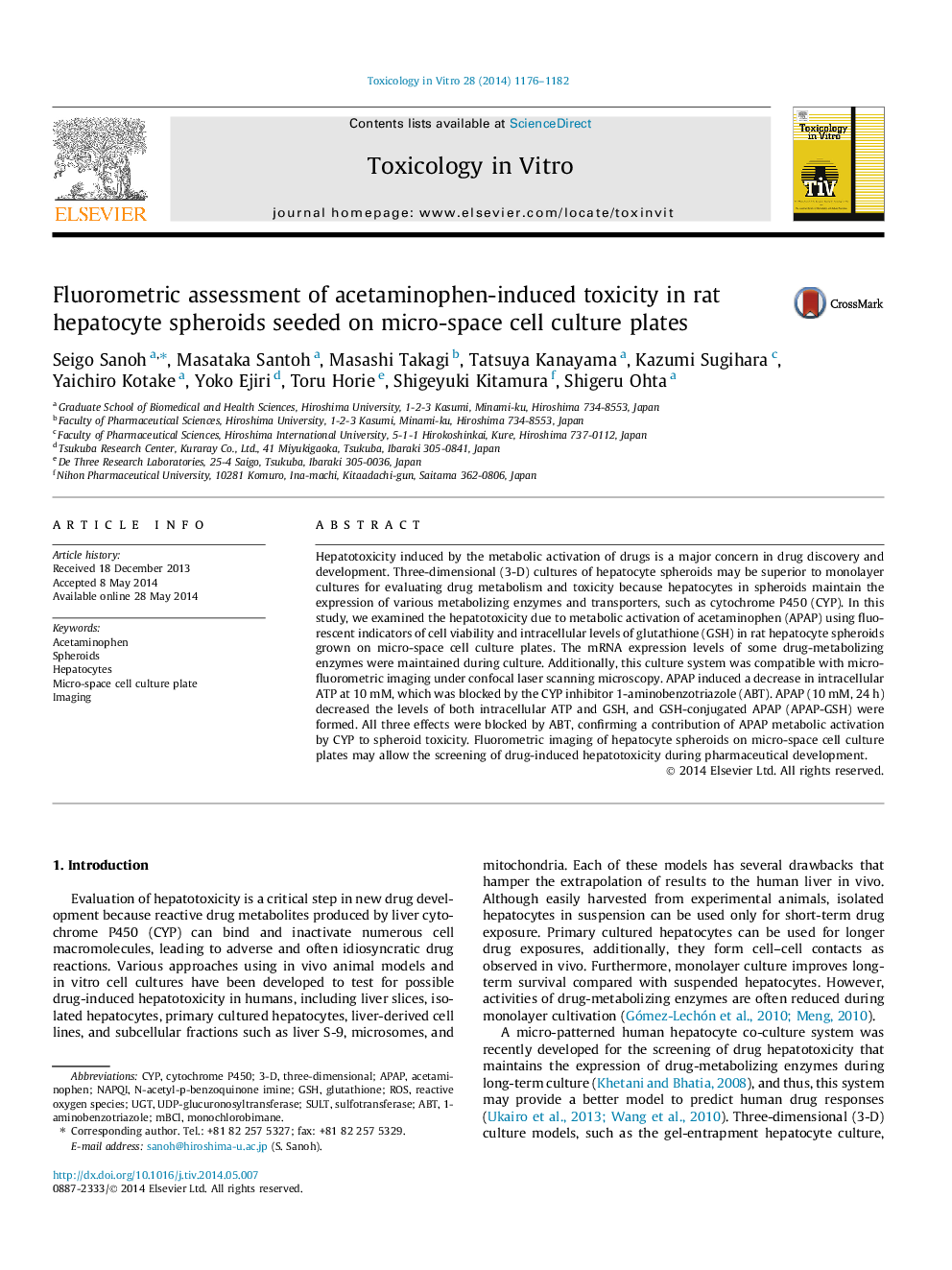| Article ID | Journal | Published Year | Pages | File Type |
|---|---|---|---|---|
| 5861945 | Toxicology in Vitro | 2014 | 7 Pages |
â¢Three dimensional cultures of hepatocyte spheroids were achieved by micro-space cell culture plates.â¢Comparison of mRNA expression of drug-metabolizing enzymes during spheroid culture.â¢Fluorometric imaging of hepatotoxicity due to metabolic activation of acetaminophen in spheroids.â¢Acetaminophen glutathione conjugate formed in spheroids.
Hepatotoxicity induced by the metabolic activation of drugs is a major concern in drug discovery and development. Three-dimensional (3-D) cultures of hepatocyte spheroids may be superior to monolayer cultures for evaluating drug metabolism and toxicity because hepatocytes in spheroids maintain the expression of various metabolizing enzymes and transporters, such as cytochrome P450 (CYP). In this study, we examined the hepatotoxicity due to metabolic activation of acetaminophen (APAP) using fluorescent indicators of cell viability and intracellular levels of glutathione (GSH) in rat hepatocyte spheroids grown on micro-space cell culture plates. The mRNA expression levels of some drug-metabolizing enzymes were maintained during culture. Additionally, this culture system was compatible with microfluorometric imaging under confocal laser scanning microscopy. APAP induced a decrease in intracellular ATP at 10Â mM, which was blocked by the CYP inhibitor 1-aminobenzotriazole (ABT). APAP (10Â mM, 24Â h) decreased the levels of both intracellular ATP and GSH, and GSH-conjugated APAP (APAP-GSH) were formed. All three effects were blocked by ABT, confirming a contribution of APAP metabolic activation by CYP to spheroid toxicity. Fluorometric imaging of hepatocyte spheroids on micro-space cell culture plates may allow the screening of drug-induced hepatotoxicity during pharmaceutical development.
Graphical abstractDownload full-size image
